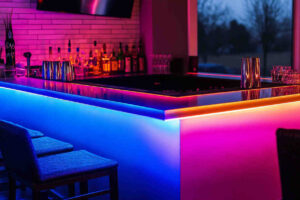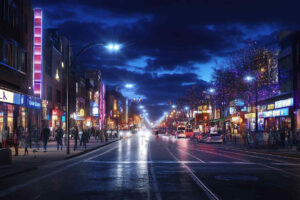A poorly lit bar can ruin the atmosphere, making it either too bright and uninviting or too dark and impractical. Bad lighting affects customer experience, reducing sales and customer satisfaction. The solution? Thoughtfully designed lighting that enhances ambiance, functionality, and energy efficiency. Let’s explore how to choose the best lighting for your bar.
Choosing the right lighting for a bar involves balancing ambiance, visibility, and energy efficiency. Proper bar lighting should create an inviting atmosphere while ensuring that staff and customers can see clearly. From warm accent lighting to functional task lighting, selecting the right mix of fixtures like LED bar lighting, pendant lights, and under-bar lighting can enhance the customer experience. This guide covers essential factors like lighting layout, fixture types, and modern bar lighting ideas to help you make the best choice.
Want to create the perfect bar lighting setup? Let’s dive into the details.
Table of Contents
Importance of Proper Lighting in Bars
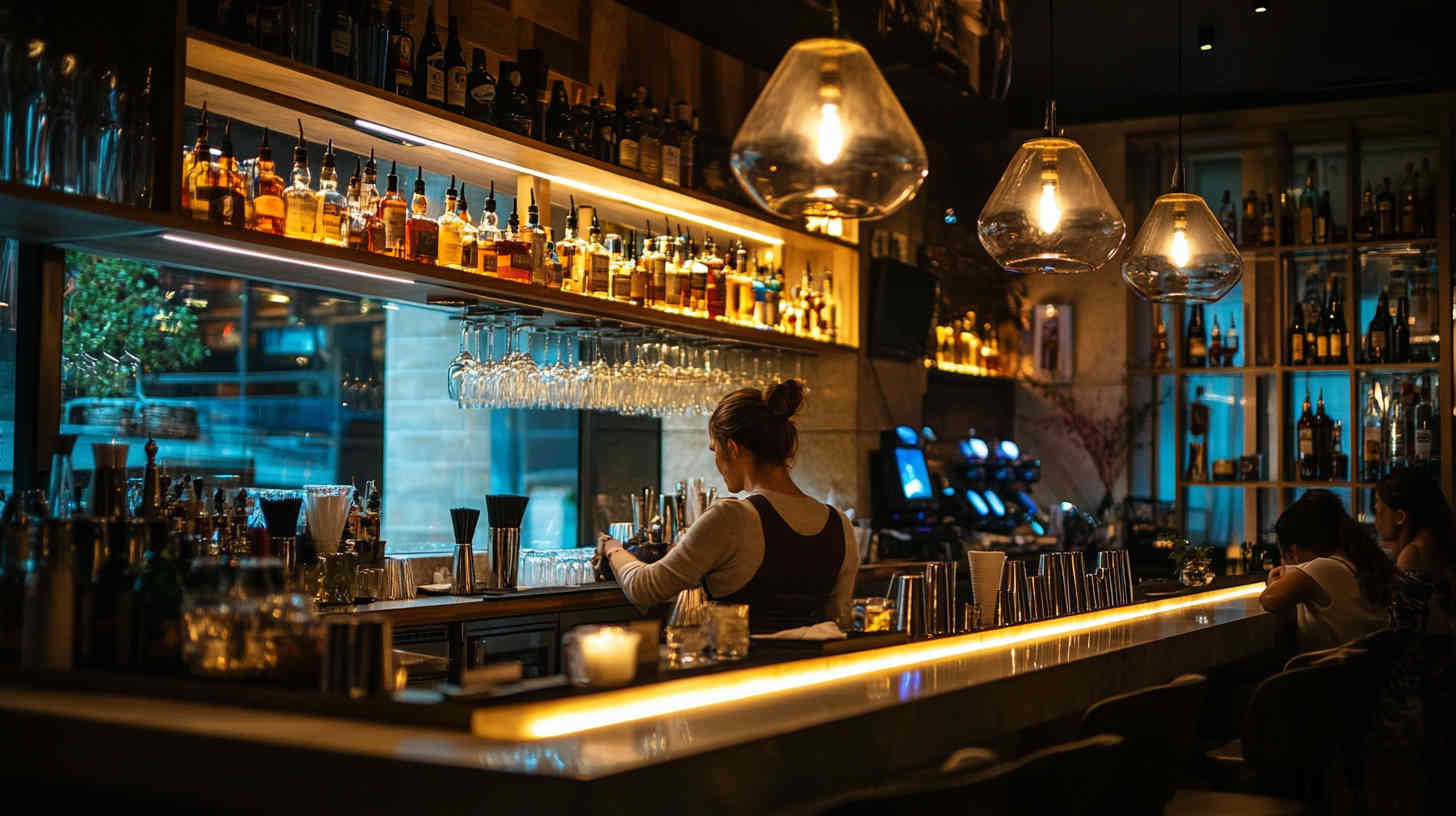
Lighting plays a crucial role in setting the ambiance, enhancing customer experience, and improving functionality in bars. The right lighting design can make a bar feel inviting, stylish, and comfortable while also ensuring practical visibility for staff and patrons.
1. Creating the Right Atmosphere
Proper lighting helps establish the bar’s theme and mood. Soft, warm lighting creates a cozy and intimate setting, while dynamic and colorful lighting enhances a vibrant, energetic nightlife experience. Adjusting brightness levels based on different times of the evening can keep the ambiance engaging.
2. Enhancing Customer Experience
A well-lit bar encourages customers to relax and enjoy their time. Strategic lighting, such as accent lights on liquor shelves and soft pendant lights over seating areas, adds visual appeal and makes drinks look more attractive. Poor lighting, whether too bright or too dim, can make customers uncomfortable and affect their overall experience.
3. Improving Safety and Functionality
Bartenders and staff need sufficient lighting to prepare drinks, handle glassware, and serve customers efficiently. Task lighting behind the bar ensures that employees can work quickly and safely without straining their vision. Emergency and pathway lighting also improve safety by guiding guests through dimly lit areas.
4. Energy Efficiency and Cost Savings
Using LED lighting solutions reduces energy consumption and lowers electricity costs. LEDs provide bright, adjustable lighting while consuming significantly less power than traditional bulbs. Smart lighting systems with dimmers and motion sensors further optimize energy use.
5. Highlighting Design Features
Proper lighting enhances architectural details, décor, and bar displays. Illuminated bottle shelves, under-bar lighting, and decorative fixtures can make a bar more visually appealing, attracting customers and increasing social media appeal.
Understanding Bar Lighting Basics

Bar lighting typically consists of three key layers: ambient, task, and accent lighting. Ambient lighting provides overall illumination, usually from ceiling lights or recessed fixtures. Task lighting focuses on work areas, ensuring bartenders can mix drinks efficiently. Accent lighting highlights decor, bar shelves, and seating areas, adding character to the space. Combining these layers ensures balanced lighting that enhances both function and style.
1. Types of Bar Lighting
A balanced bar lighting setup includes three main types:
- Ambient Lighting – Provides overall illumination for the bar space, ensuring customers and staff can move comfortably. Common choices include recessed lighting, pendant lights, and chandeliers.
- Task Lighting – Focused lighting that improves visibility for bartenders and staff. Under-counter lights, back bar lights, and shelf lighting help with drink preparation and inventory management.
- Accent Lighting – Highlights design elements, decor, and bottle displays. LED strip lights, neon signs, and wall sconces create visual interest and enhance the bar’s aesthetics.
2. Choosing the Right Color Temperature
Color temperature affects the mood and ambiance of a bar.
– Warm white (2700K–3000K) – Creates a cozy, intimate setting, ideal for lounges and upscale bars.
– Neutral white (3500K–4000K) – Provides balanced lighting, suitable for casual and modern bars.
– Cool white (5000K–6500K) – Bright and vibrant, often used in energetic or club-like environments.
3. Dimmable and Smart Lighting Controls
Using dimmable LED lights allows bar owners to adjust brightness levels based on time and mood. Smart lighting systems with remote or app control offer flexibility in managing lighting schemes for different events or themes.
4. Energy Efficiency and Sustainability
LED lighting is the most energy-efficient option for bars, consuming less power and generating minimal heat. Motion sensors, dimmers, and automated timers help optimize energy use while maintaining a comfortable ambiance.
5. Proper Placement for Maximum Effect
- Overhead lights should provide even illumination without being too harsh.
- Back bar lighting should highlight liquor displays to attract customers’ attention.
- Seating area lights should create a welcoming atmosphere while allowing customers to see their drinks and food clearly.
- Pathway and exit lighting should ensure safety and compliance with regulations.
Understanding bar lighting basics is essential for designing a visually appealing, functional, and energy-efficient space. By incorporating ambient, task, and accent lighting with the right color temperature and smart controls, bars can create the perfect atmosphere for their patrons.
How Do I Choose a LED Light Bar?
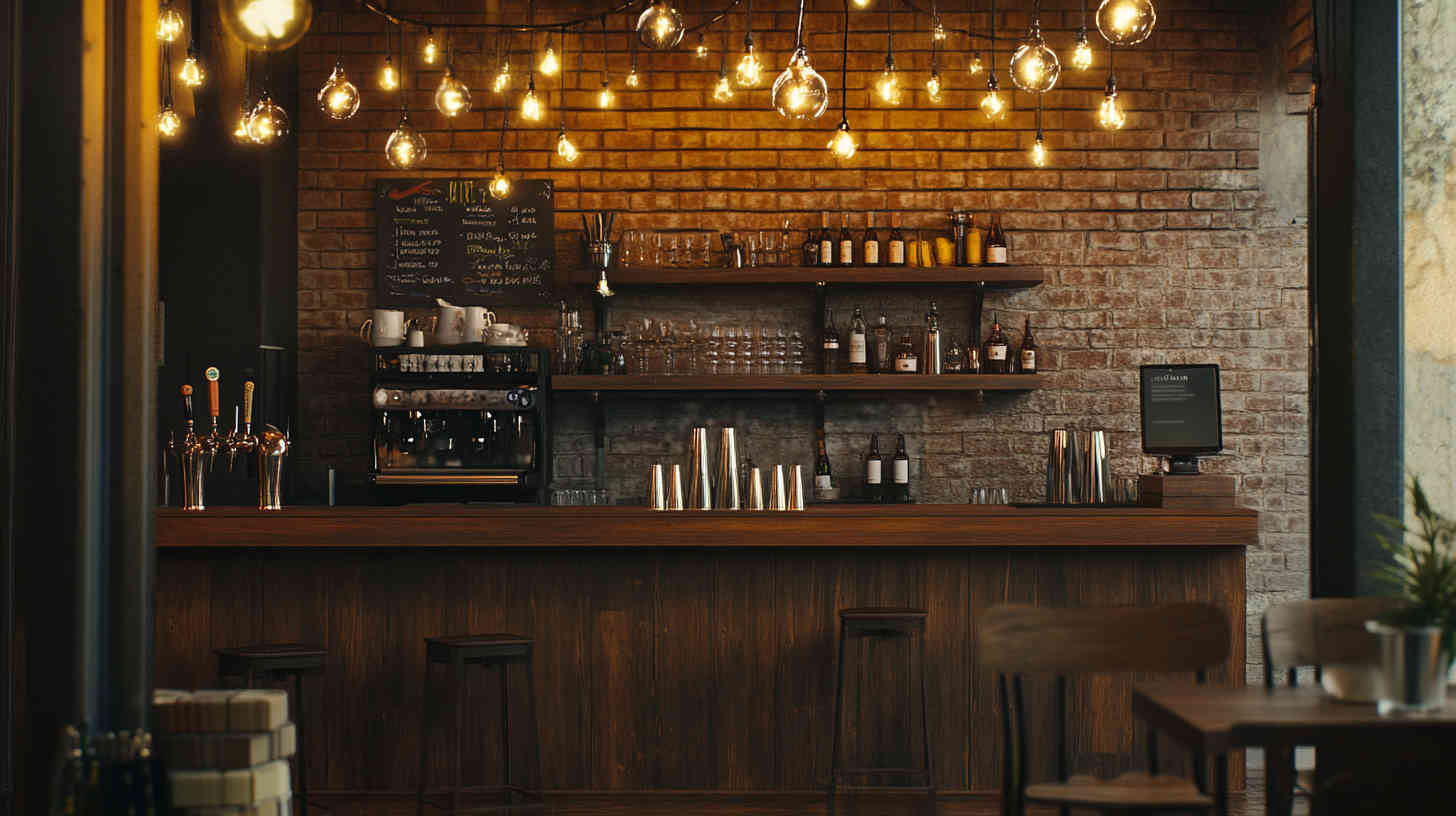
Choosing the right LED light bar involves considering brightness, color temperature, and energy efficiency1. Warm white (2700K-3000K) creates a cozy atmosphere, while cool white (4000K-5000K) enhances visibility. Dimmable LED options provide flexibility, allowing you to adjust lighting intensity based on time of day or event type. Waterproof and durable LED light bars are ideal for outdoor bars or humid environments.
1. Determine the Purpose
Identify where and how you plan to use the LED light bar.
– Off-road driving: Requires high-intensity, durable LED bars with spot or combo beams.
– Work lighting: Flood beam patterns provide wide-area illumination for construction, farming, or emergency vehicles.
– Decorative or accent lighting: RGB LED light bars with customizable colors enhance aesthetics.
2. Choose the Right Brightness (Lumens)
The brightness of a LED light bar is measured in lumens.
– 3,000–5,000 lumens: Suitable for small vehicles or auxiliary lighting.
– 6,000–10,000 lumens: Ideal for general off-road driving and work applications.
– 10,000+ lumens: Best for high-performance lighting needs in extreme conditions.
3. Select the Beam Pattern
The beam pattern determines how the light is distributed.
– Spot beam (narrow, long-distance focus): Best for high-speed driving or long-range visibility.
– Flood beam (wide-angle spread): Ideal for illuminating a large area at close range.
– Combo beam (spot + flood combination): Provides both long-distance and wide-area illumination.
4. Check for Durability and Waterproof Rating
Outdoor LED light bars must withstand harsh conditions. Look for:
– IP67 or IP68 waterproof rating: Ensures resistance to dust, water, and extreme weather.
– Aluminum housing and polycarbonate lenses: Provide durability and impact resistance.
– Shock and vibration resistance: Essential for off-road and heavy-duty use.
5. Power Efficiency and Wiring Compatibility
- Low power consumption: Energy-efficient LEDs reduce battery drain.
- Voltage compatibility: Most light bars operate on 12V–24V systems, suitable for cars, trucks, and boats.
- Easy installation: Plug-and-play wiring kits simplify setup.
To choose the best LED light bar, consider the intended use, brightness, beam pattern, size, durability, and power efficiency. A well-selected LED light bar enhances visibility, safety, and overall performance.
How to Calculate Lighting Layout for a Bar?
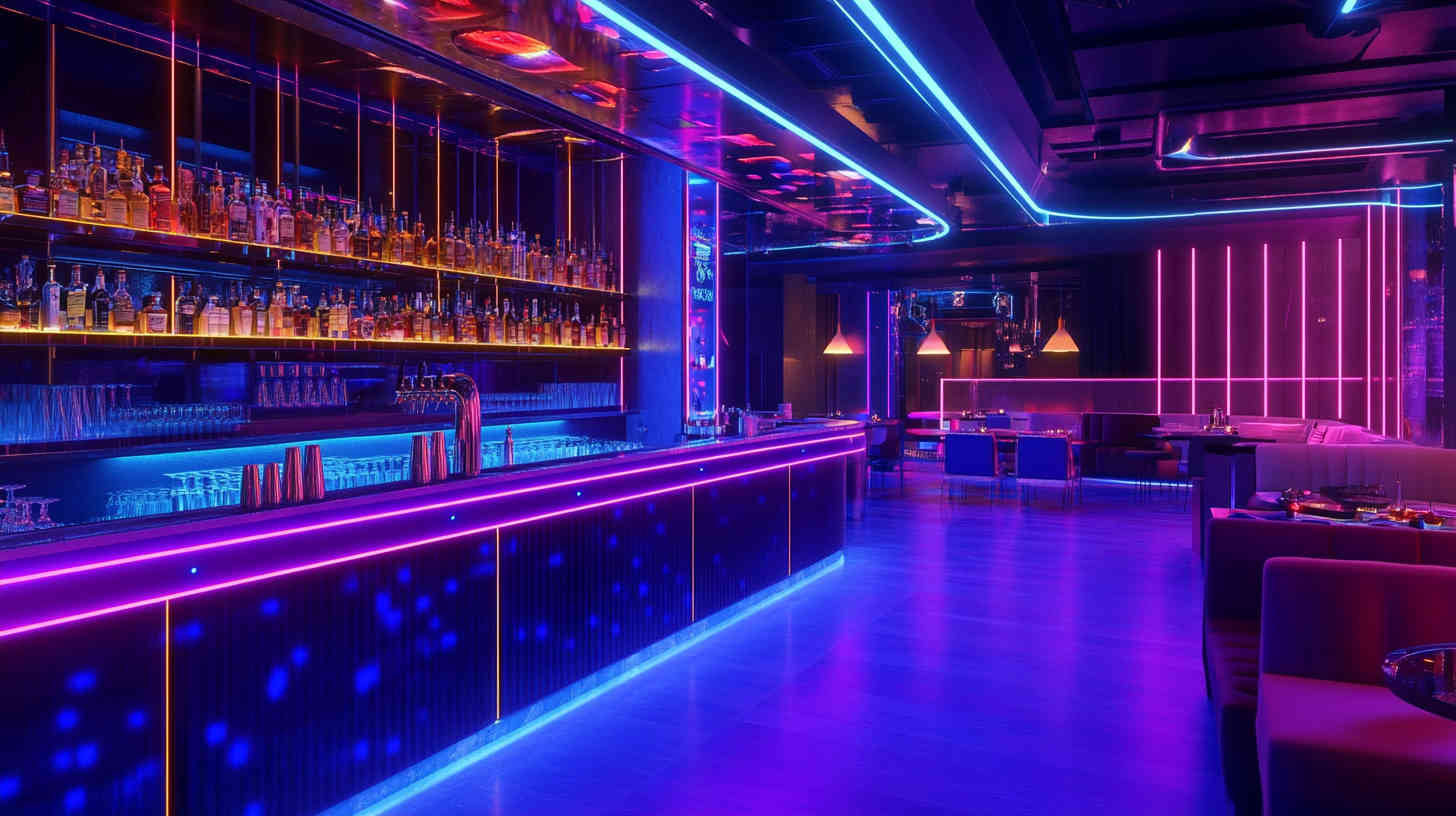
To achieve optimal lighting, calculate lumens2 based on bar size and purpose. A general rule is 20 lumens per square foot for ambient lighting, 50 lumens for task areas, and 30 lumens for accent lighting. Use lighting design software3 or consult professionals for precise planning. Consider fixture placement to avoid glare or dark spots, ensuring uniform illumination throughout the space.
1. Measure the Space
Start by measuring the length and width of the bar area. Multiply these dimensions to find the total square footage. For instance, a bar measuring 30 feet by 20 feet has a total area of 600 sq. ft.
2. Determine the Right Illuminance Level
Bars typically require different levels of brightness for different areas:
– Ambient lighting: 15–20 lumens per square foot.
– Task areas (bartending, cooking): 40–60 lumens per sq. ft.
– Accent lighting: At least three times the brightness of the surrounding ambient lighting to highlight special areas or displays.
Example calculation for ambient lighting:
– For a 600 sq. ft. bar needing 15 lumens per sq. ft., you’ll need a total of 9,000 lumens (600 × 15 = 9,000 lumens).
3. Decide on Types of Lighting Fixtures
Choose fixtures based on their intended use:
– Ambient lighting: Ceiling-mounted lights, pendant lights, or recessed lighting for general illumination.
– Task lighting: Pendants or downlights focused on bar counters, tables, and kitchen areas.
– Accent lighting: Track lights, LED strips, or wall sconces to highlight liquor displays, decorative elements, or architectural features.
4. Calculate Fixture Quantity
Determine the number of fixtures required by dividing the total lumens needed by the lumen output per fixture. For example, if each fixture provides 1,500 lumens, a 9,000-lumen requirement would need approximately six fixtures (9,000 ÷ 1,500 lumens per fixture = 6 fixtures).
5. Determine Fixture Spacing
Proper spacing ensures even light distribution without dark spots or overly bright areas. A good rule of thumb for general lighting is spacing fixtures about 1.5 times the ceiling height apart. For example, a bar with a 10-foot ceiling should space fixtures roughly 15 feet apart.
6. Choose the Right Beam Angle
Beam angle affects how widely the light spreads:
– Narrow beam angles (15°–40°) highlight specific features.
– Medium beam angles (40°–70°) work best for general ambient lighting.
– Wide beam angles (90°–120°) offer broad coverage for lower ceilings or larger areas.
7. Ensure Balanced Color Temperature
Use warm white (2700K–3500K) lighting for a cozy, inviting atmosphere in bar seating areas, and neutral white (3500K–4500K) for functional spaces like bar counters or kitchens.
Calculating lighting for bars involves measuring space, determining brightness needs, choosing fixtures, and optimizing placement. Proper lighting calculations ensure a comfortable, visually appealing, and energy-efficient environment that enhances customer experience.
Considerations for Outdoor Bar Lighting

Outdoor bars require weather-resistant lighting that enhances ambiance while providing security. Solar-powered or waterproof LED lights are energy-efficient and durable. String lights, lanterns, or LED floodlights create a festive look. Motion sensor lights improve safety around entrances and pathways. Choose adjustable fixtures that can withstand environmental conditions while maintaining a stylish appeal.
Conclusion
Selecting the right bar lighting is crucial for creating a welcoming and visually appealing atmosphere. By combining ambient, task, and accent lighting, you can enhance customer experience while optimizing energy efficiency. Whether you’re designing a home bar or a commercial venue, modern bar lighting ideas like LED strip lights, pendant lighting, and smart systems can elevate your space.
Need help selecting the best lighting for your bar? Contact us for expert advice and customized solutions!
- Learn about innovative strategies to enhance energy efficiency in bar lighting, reducing costs and environmental impact. ↩
- Understanding lumens is essential for effective lighting design, ensuring your bar has the right brightness for ambiance and functionality. ↩
- Explore top lighting design software to create precise and effective lighting layouts for your bar, enhancing both aesthetics and functionality. ↩


